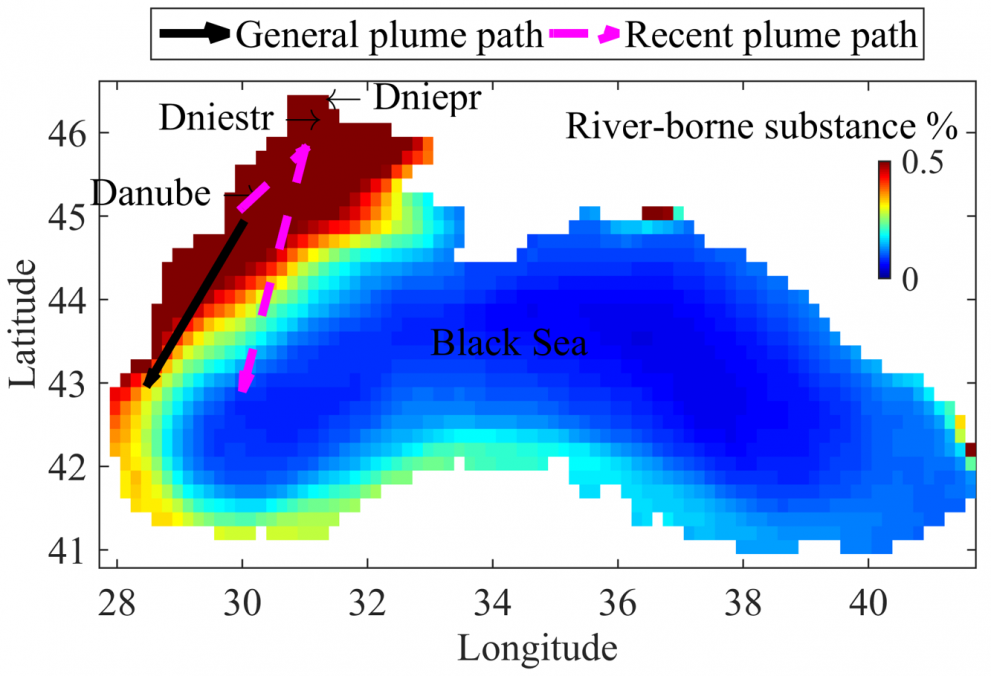
A recently published JRC article highlights a change in the direction of contaminants deposited by the Danube River on the North Western Shelf (NWS) of the Black Sea.
While these river-borne contaminants used to be predominantly transported southward, they are now directed first northward before turning southward.
These changes, most likely due to recent climate-induced changes in circulation patterns in the Black Sea, are leading to increasing build-up of contaminants in the region.
Given the negative impacts of such contaminants on water quality and marine ecosystems, it is important to understand better the propagation pathways of such pollutants.
That is what this JRC article set out to do.
Tracking the transport of river-borne substances
The authors performed tracer simulations for anthropogenically derived river-borne substances, aiming to track their transport and accumulation in the Black Sea basin, and to identify possible long-term trends.
The results suggest a decrease in the southward-directed Danube plume transport, going along the western coastline, and an increasing transport to the north and north-eastern parts of the NWS, before then turning direction to the southwest.

Changing circulation patterns in the Black Sea
Most likely caused by climatic changes, the Black Sea circulation showed an amplification and consolidation of the characteristic anti-clockwise Rim Current over the past few decades. These substantial changes in the circulation patterns seem to be a key factor behind the modification of the river plume pathways.
The transport of river-borne substances through the shelf break reaches an annual maximum in September, when pulses with larger tracer concentrations can be even found in the inner basin.
Increasing accumulation of river-borne contaminants in the region
Caused by the changing circulation patterns, the accumulation of river-borne contaminants on the north- and south-western shelf region has increased in recent decades.
These results support the assessment of the environmental targets set by the Marine Strategy Framework Directive and can help to direct monitoring activities to problematic areas.
This advancement not only teaches us about how contaminants are spreading in the Black Sea, but also improves the Commission's in-house marine models to make more precise environmental assessments.
Further information
- Pathways and mixing of the north-western river waters in the Black Sea
- Marine Strategy Framework Directive
Related Content
Pathways and mixing of the north-western river waters in the Black Sea
Details
- Publication date
- 14 February 2020
